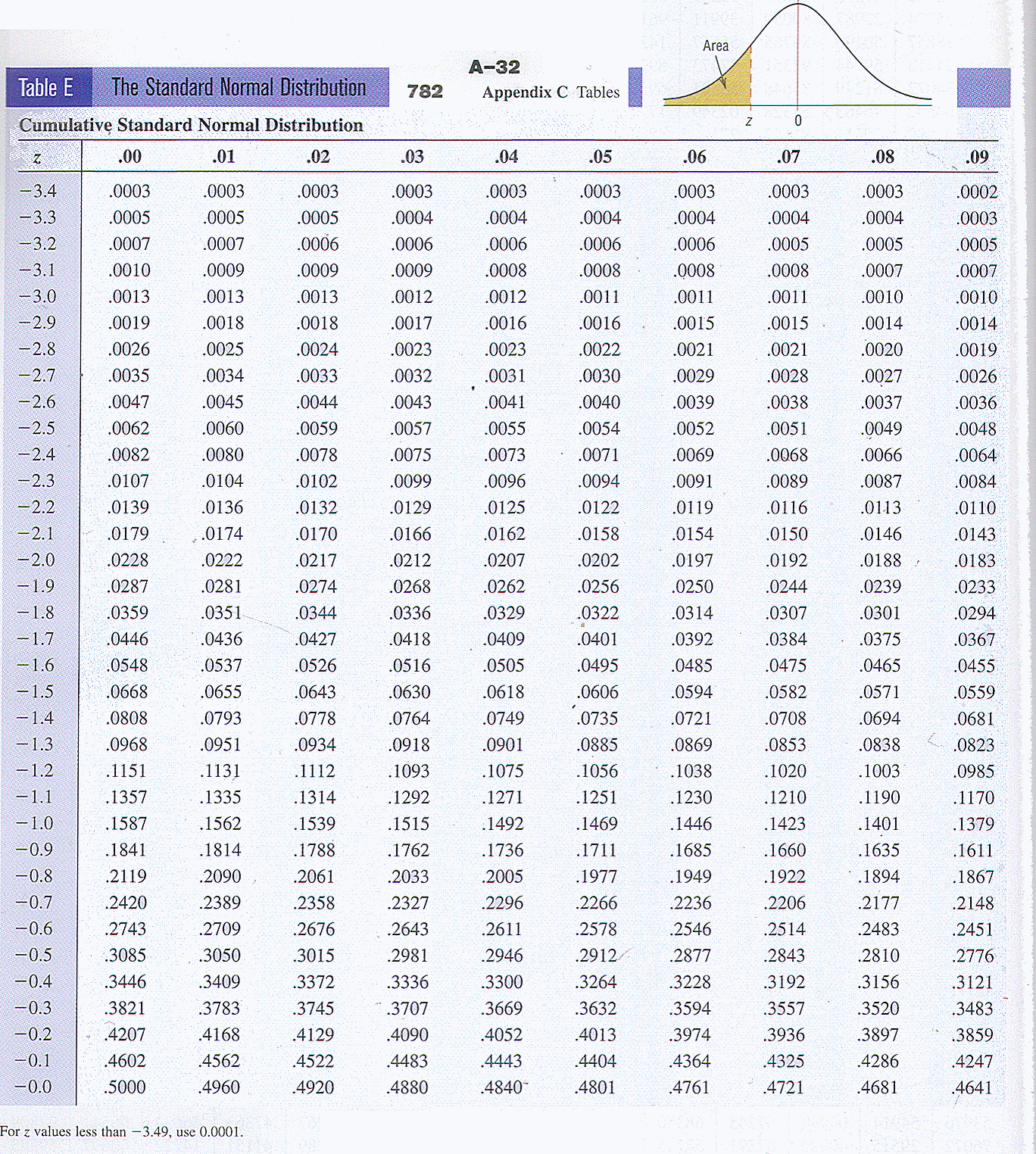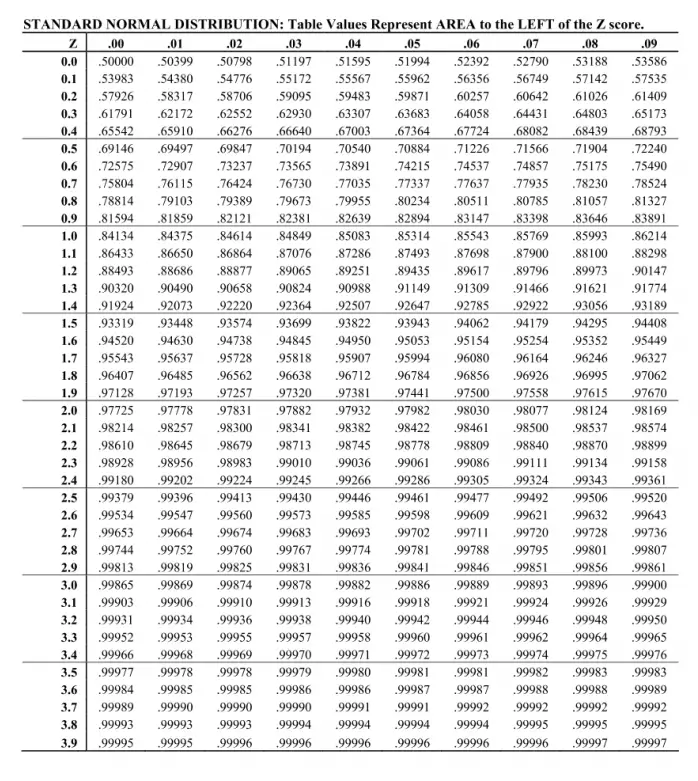

Question 1: For a two-tailed test with an alpha level of 0.30 and 18 as the sample size, what is the critical value we should compare t to? Sample Questionsįollowing are some sample questions for your practice. In a similar way, you can also map critical values for two-tailed tests with the only difference being that you have to select the two-tailed row of alpha values instead.

Hence we see that the critical value corresponding to our t in the t-distribution table is 1.711. The intersection of these two presents us with the critical value we are looking for Once that is done, let us map the degrees of freedom under the leftmost column of the table under ( df)ĥ. Our alpha level for this example is 0.05. Next, we look for the alpha value along the above highlighted row. So we will choose the one-tail row to map our alpha level.ģ. Next, we see that our t-test is one-tailed. To get the degrees of freedom ( df), we have to subtract 1 from the sample size.
#STANDARD NORMAL TABLE FOR STATS HOW TO#
Let us understand how to read the T-Table using an example of an one-tailed test.Įxample: Let’s say we want to map an one-tailed t-test for a mean with an alpha level of 0.05. Once you have all three, all you have to do is pick the respective column for one-tail or two-tail from the table and map the intersection of the values for the degrees of freedom ( df) and the alpha level.
.jpg)
The common alpha levels for t-test are 0.01, 0.05 and 0.10 Alpha level: The alpha level ( α ), also known as the significance level is the probability of rejecting the null hypothesis when it is true.The degrees of freedom will either be explicitly mentioned in the problem statement or if it is not explicitly mentioned, all you have to do is subtract one from your sample size (n – 1) and what you get will be your df or degrees of freedom. Degrees of freedom: The degrees of freedom (df) indicate the number of independent values that can vary in an analysis without breaking any constraints.The alpha levels are listed at top of the table (0.50, 0.25, 0.20, 0.15…for the one-tail and 1.00, 0.50, 0.40, 0.30…for the two-tails) and as you can see they vary based on whether the t-test is one-tail or two-tails. The number of tails: We need to know whether our t-test is one-tailed or two-tailed because we will use the respective one-tail or two-tail row to mark the alpha level.The pre-requisites required to using a T-table are: Next, we are going to learn how to read the T-Table and map critical values on it using examples and diagrams but first we will need a few things or pre-requisites before we can do that.
#STANDARD NORMAL TABLE FOR STATS FREE#
The T Table given below contains both one-tailed T-distribution and two-tailed T-distribution, df up to 1000 and a confidence level up to 99.9%įree Usage Disclaimer: Feel free to use and share the above images of T-Table as long as you provide attribution to our site by crediting a link to How to Use the T-Table

Given below is the T Table (also known as T-Distribution Tables or Student’s T-Table).


 0 kommentar(er)
0 kommentar(er)
